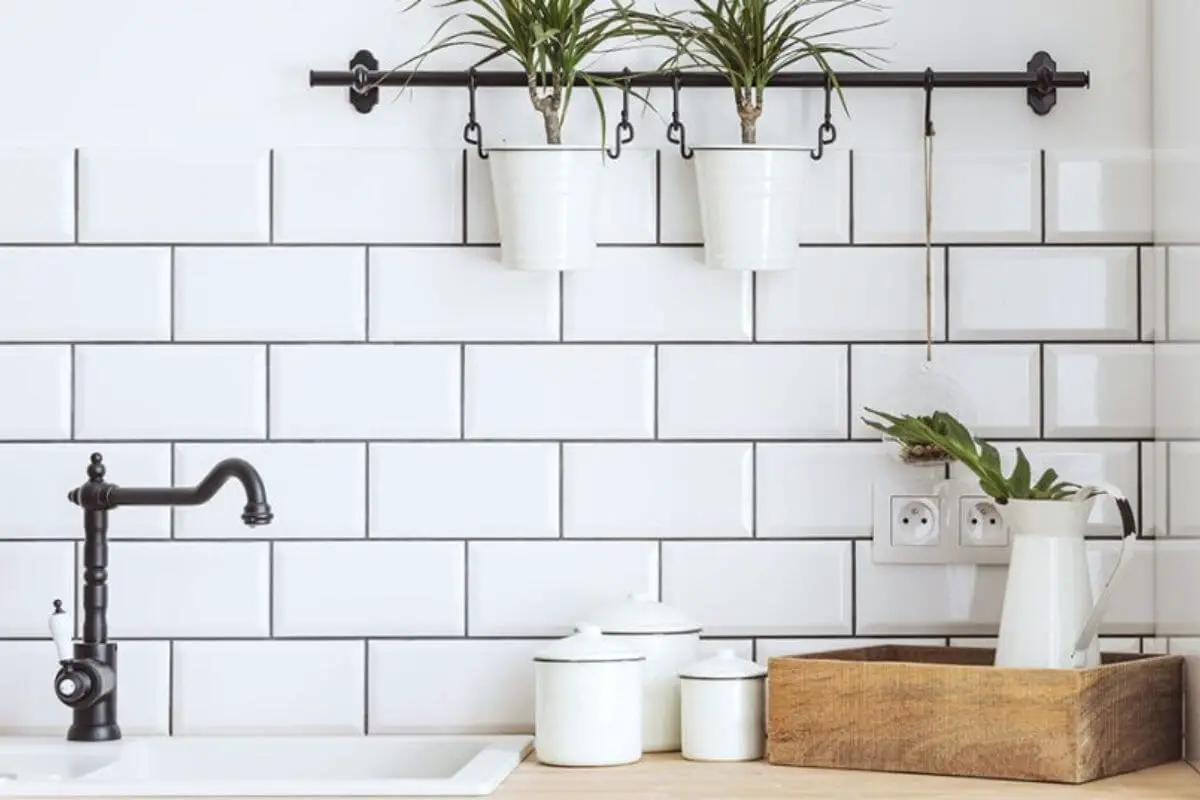When it comes to installing subway tile, the grout line size can significantly impact the final appearance of your project. Two common options are 1/8-inch and 1/16-inch grout lines. Each choice has its own aesthetic and practical considerations. In this article, we’ll compare the two grout line sizes to help you make an informed decision for your subway tile installation.
1. Introduction
Subway tile is a popular choice for kitchens, bathrooms, and other tiled surfaces due to its timeless appeal and versatility. The size of the grout line you choose can have a significant impact on the overall look and maintenance of your project.
2. Aesthetic Differences
1/8-Inch Grout Line: A larger 1/8-inch grout line creates a more pronounced grid-like pattern, emphasizing the individual tiles. It provides a classic and bold look that’s reminiscent of traditional subway tile installations. This size is suitable for those who prefer a well-defined and visually striking appearance.
1/16-Inch Grout Line: A thinner 1/16-inch grout line offers a more seamless and contemporary look. The reduced grout line width allows the tiles to blend together, creating a smoother surface with less visible grout. This size is ideal for those seeking a modern, clean, and streamlined aesthetic.
3. Practical Considerations
1/8-Inch Grout Line: The larger grout lines offer better water resistance and are often recommended for wet areas like showers and backsplashes. They also provide more grip for tile setters during installation.
1/16-Inch Grout Line: Thinner grout lines may require more precise tile installation and leveling to achieve a seamless look. They are commonly used in dry areas such as kitchen backsplashes and accent walls.
4. Maintenance
1/8-Inch Grout Line: Larger grout lines are easier to maintain and clean because there’s more space for grout to resist staining and mold growth. Regular cleaning is typically straightforward.
1/16-Inch Grout Line: Thinner grout lines can be more challenging to clean due to the reduced grout surface. They may require more frequent maintenance and sealing to prevent staining and mold.
5. Installation Difficulty
1/8-Inch Grout Line: Installing subway tile with 1/8-inch grout lines is generally considered easier for both professional installers and DIY enthusiasts. It allows more room for adjusting tile placement during installation.
1/16-Inch Grout Line: Achieving a consistent and seamless appearance with 1/16-inch grout lines can be more challenging, requiring precise tile leveling and spacing. Professional installation may be preferred.
6. Budget
1/8-Inch Grout Line: Using larger grout lines typically requires less tile material, which can result in cost savings on materials. However, installation costs may vary depending on the complexity of the project.
1/16-Inch Grout Line: Thinner grout lines may require more tile material, potentially increasing material costs. Additionally, the precision required for installation may affect labor costs.

7. Final Verdict
Choosing between a 1/8-inch and a 1/16-inch grout line depends on your design preferences, the specific area of installation, and your willingness to invest time and effort in maintenance.
- 1/8-inch grout lines offer a classic, bold look, better water resistance, easier maintenance, and simpler installation.
- 1/16-inch grout lines provide a modern, seamless appearance, but may require more precise installation and more frequent maintenance.
8. Conclusion
Both grout line sizes can result in stunning subway tile installations, so the choice ultimately comes down to your desired aesthetic, the location of the project, and your willingness to maintain the tiles. Consider your priorities and consult with a tile professional if needed to ensure the best outcome for your specific project.
FAQs
What is the main difference between 1/8-inch and 1/16-inch grout lines for subway tile?
The primary difference is the width of the grout lines. 1/8-inch grout lines are larger, creating a bolder, grid-like pattern, while 1/16-inch grout lines are thinner, offering a more seamless appearance.
Which grout line size is better for a classic subway tile look?
1/8-inch grout lines are more commonly associated with the classic subway tile look, emphasizing the individual tiles with a pronounced grid pattern.
Is there a specific grout line size that’s better for wet areas like showers?
For wet areas like showers, 1/8-inch grout lines are often recommended due to their better water resistance and ease of maintenance.
Which grout line size is preferred for achieving a modern, seamless appearance?
1/16-inch grout lines are ideal for achieving a modern and seamless look, as they create less visible grout and allow the tiles to blend together.
Do thinner grout lines require more precise tile installation?
Yes, achieving a consistent and seamless appearance with 1/16-inch grout lines may require more precise tile leveling and spacing during installation.
Are there differences in maintenance between the two grout line sizes?
Yes, 1/8-inch grout lines are easier to clean and maintain due to the larger grout surface, while 1/16-inch grout lines may require more frequent cleaning and sealing.
Do thinner grout lines increase the cost of tile materials?
Thinner grout lines may require more tile material, potentially increasing material costs. However, the overall cost may vary based on the complexity of the project.
Which grout line size is easier for DIY installations?
1/8-inch grout lines are generally considered easier for both professional installers and DIY enthusiasts, as they provide more room for adjusting tile placement.
Can I mix grout line sizes within the same project for design variation?
Yes, you can mix grout line sizes within the same project for design variation. This can create interesting visual effects, especially in larger tile installations.
How do I decide between 1/8-inch and 1/16-inch grout lines for my subway tile project?
Your decision should consider your design preferences, the location of the project, and your willingness to invest time and effort in maintenance. Consult with a tile professional if you’re uncertain about the best choice for your specific project.



